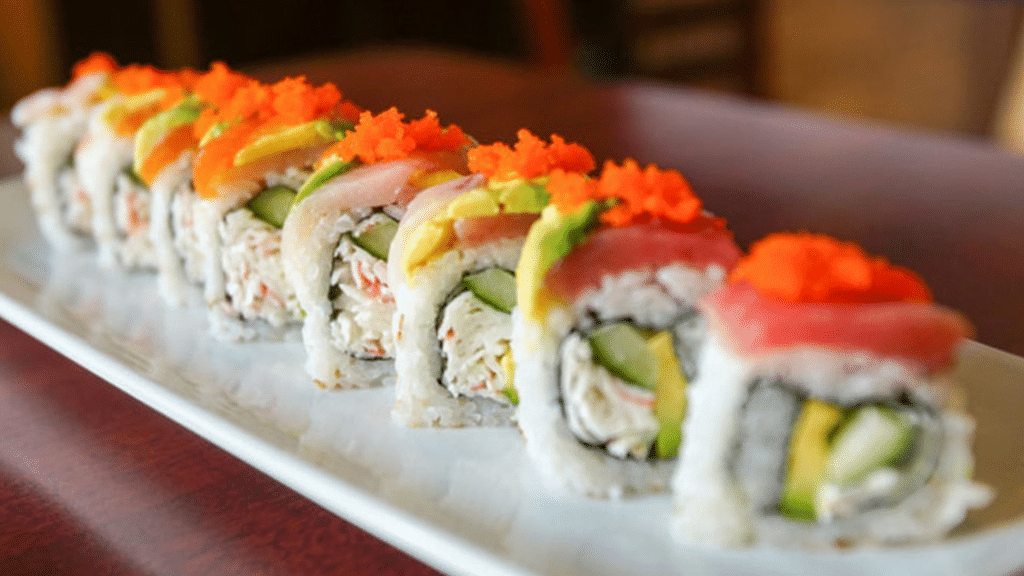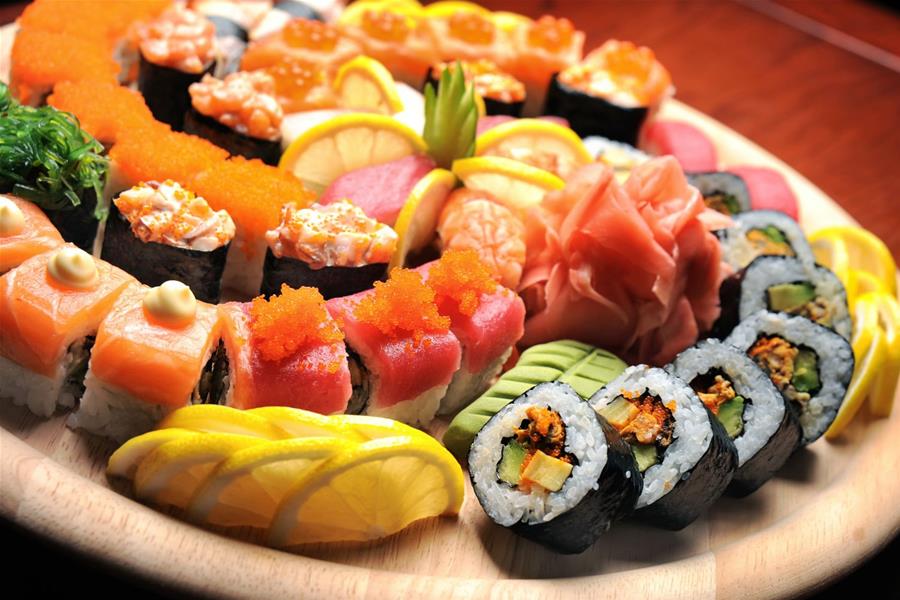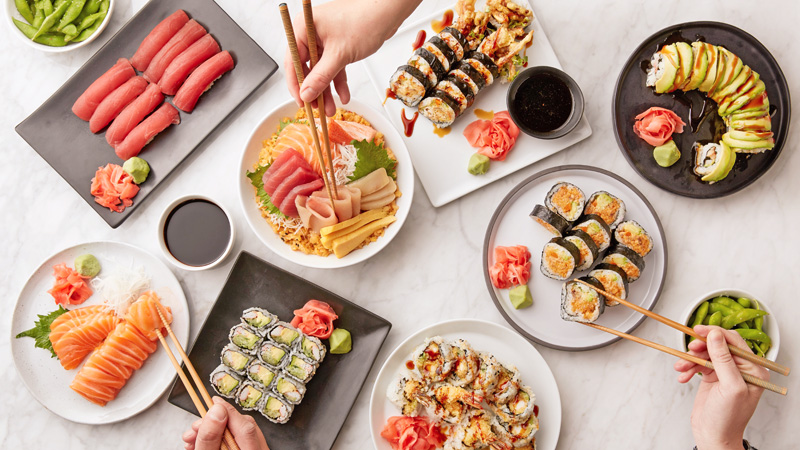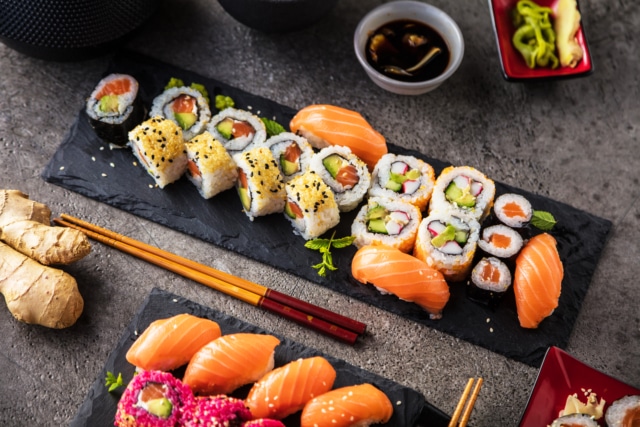The Ultimate Japanese Sushi Rice Recipe: Master the Art of Perfect Sushi Rice
Written By James Morgan
by Avi Green
If you've ever tried your hand at making sushi at home, you know that the heart of any good sushi roll is the rice. Without perfectly seasoned and impeccably cooked sushi rice, even the best quality fish and freshest vegetables won't save your rolls. In this comprehensive guide, we will delve into the secrets of crafting the perfect Japanese sushi rice recipe. Whether you're an amateur cook or a seasoned kitchen veteran, this guide aims to boost your confidence and help you achieve restaurant-quality sushi rice right in your own kitchen.

What is Sushi Rice?
Sushi rice, or 'shari', is a particular type of rice used in sushi-making. This rice should be cooked and seasoned perfectly, serving as the foundation for your sushi rolls. The main elements contributing to the quality of sushi rice are the type of rice used, the cooking method, and the seasoning. In this article, we'll explore each of these key factors in detail, ensuring you have all the knowledge to perfect your Japanese sushi rice recipe.

Ingredients: What You Need
- 2 cups Japanese short-grain sushi rice
- 2 cups water, plus extra for rinsing
- 1/2 cup rice vinegar
- 1/4 cup granulated sugar
- 1 teaspoon salt
These ingredients are the starting point for any Japanese sushi rice recipe. Each ingredient plays a vital role in achieving that authentic sushi rice taste and texture. It is crucial to choose high-quality Japanese short-grain sushi rice, as other types of rice won't give you the same stickiness and pliability required for making sushi.

Equipment: What You'll Need
Making sushi rice is not only about the ingredients but also the equipment. Here's a list of essential tools:
Utilizing the right equipment makes a significant difference in the outcome of your Japanese sushi rice recipe. A rice cooker ensures evenly cooked rice, while a proper sushi knife and cutting board help you handle seaweed and ingredients with precision and care.

Step-by-Step Guide to Making Sushi Rice
Step 1: Rinsing the Rice
Rinsing the rice is the first and most critical step in preparing sushi rice. Place the 2 cups of Japanese short-grain rice in a strainer and rinse it under cold water until the water runs clear. This process helps to remove excess starch and prevents the rice from becoming too sticky during cooking. The rinsing should be thorough; usually, it takes about 4-5 rinses to achieve clear water.
Step 2: Cooking the Rice
Once rinsed, transfer the rice to a rice cooker and add 2 cups of water. Let it sit for about 30 minutes before turning on the rice cooker. This soaking period is essential because it allows the rice grains to absorb water, ensuring even cooking. If you don't have a rice cooker, you can use a pot with a tight-fitting lid. Bring the water and rice to a boil, reduce to low heat, and cover the pot. Cook for about 18 minutes or until the water is fully absorbed. Once cooked, let the rice sit, covered, for an additional 10 minutes to steam and finish cooking.
Step 3: Seasoning the Rice
While the rice is cooking, it's time to prepare the sushi rice seasoning. In a small saucepan, combine 1/2 cup of rice vinegar, 1/4 cup of granulated sugar, and 1 teaspoon of salt. Warm the mixture over low heat until the sugar and salt have dissolved. Remove the saucepan from heat and let it cool to room temperature. This seasoned vinegar is what gives sushi rice its unique flavor.
Step 4: Combining the Rice and Seasoning
Transfer the cooked rice into a wooden hangiri (sushi rice mixing bowl) or a large bowl. Using a wooden spatula, gently spread the rice out and slowly add the cooled vinegar seasoning, folding it into the rice with slicing motions. Be gentle to prevent breaking the rice grains, and fan the rice as you mix to help it cool quickly. This process not only seasons the rice but also gives it the perfect glossy finish.
Step 5: Let the Rice Rest
Once seasoned, let the rice cool to room temperature before using it in your sushi rolls. The rice should be slightly sticky but still easily separated. Proper cooling is crucial in maintaining the right texture and preventing the rice from becoming too mushy when rolled with other ingredients.
Tips and Tricks for Perfect Sushi Rice
Even with the right ingredients and equipment, perfecting your Japanese sushi rice recipe can take some practice. Here are some additional tips to help you achieve the best results:
- Always use high-quality Japanese short-grain rice. Brands like Nishiki or Kokuho Rose are excellent choices.
- Dont rush the rinsing process. Properly rinsed rice cooks more evenly and has a better texture.
- If you don't have a rice cooker, a heavy-bottomed pot with a tight lid works well. Just be sure to keep the lid on during the entire cooking process.
- Cooling the rice while fanning helps to give it a shiny and non-sticky finish, essential for sushi-making.
- Avoid refrigerating sushi rice as it can harden the grains and alter the texture.
For more cooking tutorials, check out our guide on How to Cook on a Cast Iron Griddle and Chicken Thighs in Dutch Oven.
Conclusion: Elevate Your Sushi Making Skills
Mastering the Japanese sushi rice recipe is essential for anyone looking to create authentic and delicious sushi at home. By following this step-by-step guide and utilizing the right ingredients and equipment, you'll be well on your way to making sushi rice that rivals your favorite sushi restaurant. Remember, practice makes perfect, and with time, your sushi-making skills will surely impress friends and family.
For further reading on sushi-making and recipes, check out this Simple Sushi Recipe by BBC Good Food.
Care for Your Equipment
After an extensive sushi-making session, it's crucial to take care of your cookware to ensure longevity. Clean your equipment with these essentials:
As an Amazon Associate, I earn from qualifying purchases.
Enjoy your sushi-making journey and may your rolls be as delightful as those from Japan!



